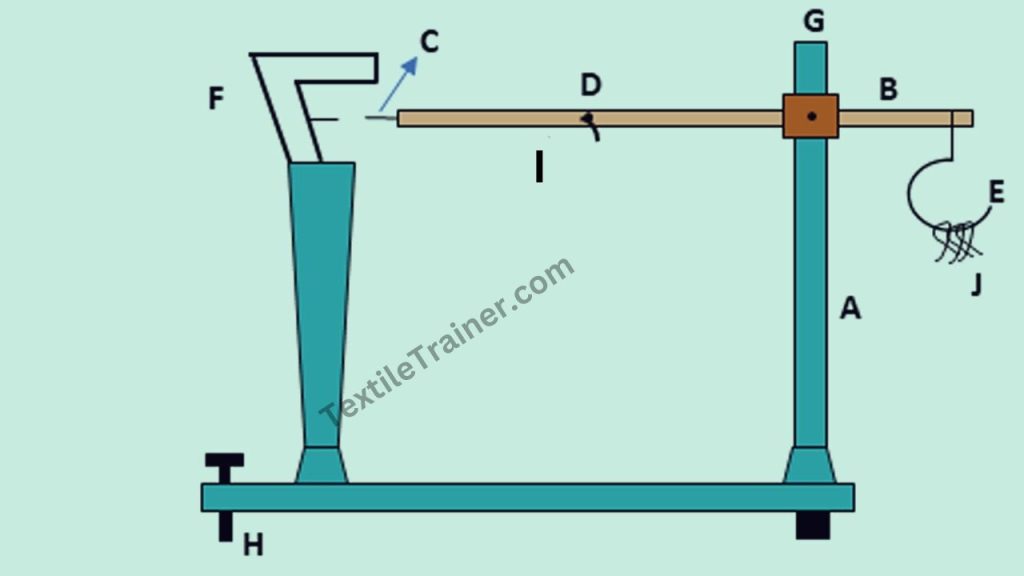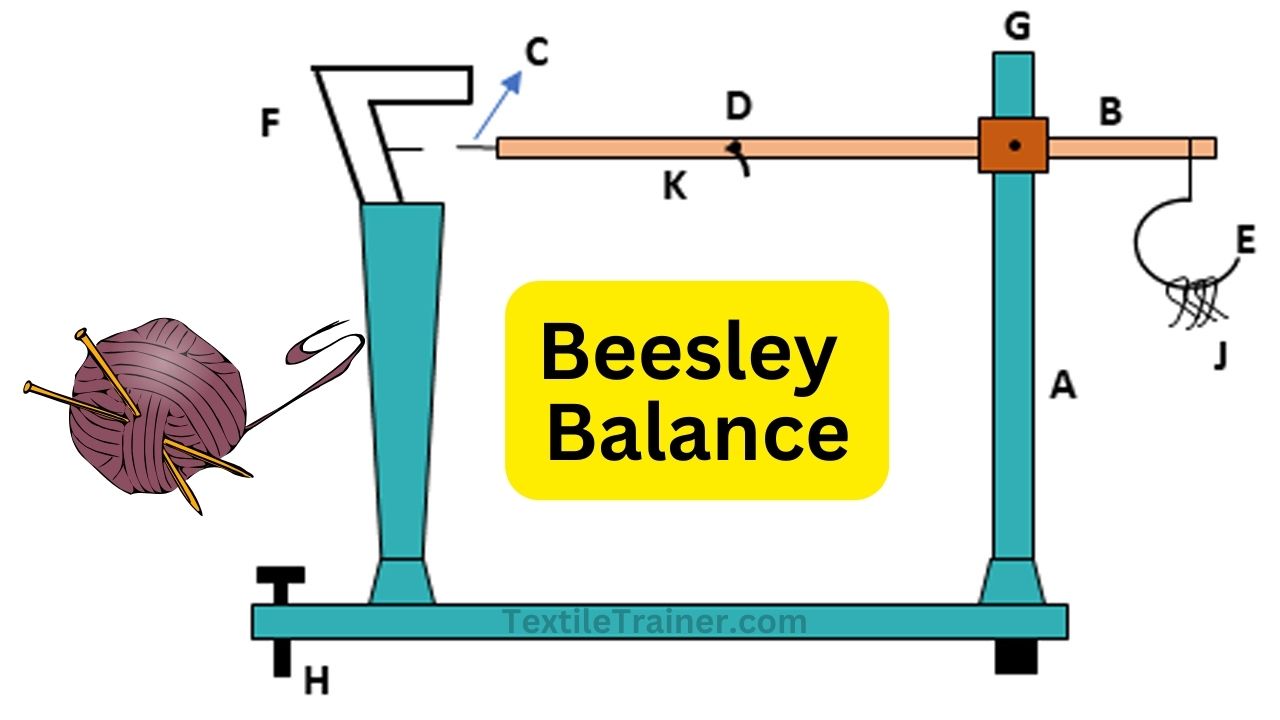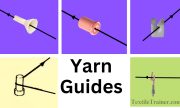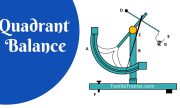Name of the Experiment:
Study on Determination of yarn count by using Beesley balance.
Introduction:
The thickness or diameter of a yarn is one of its most fundamental properties. However, measuring its diameter in any meaningful way is impossible because the diameter of a yarn changes dramatically as it is compressed. As part of the measurement process, most methods of measuring yarn diameter, apart from optical ones, involve compressing the yarn. Consequently, there is a need for agreement on the value of pressure at which the yarn diameter will be defined since the measured diameter changes with the pressure used. The outer edge of the yarn can be hard to define with optical systems of measuring yarn diameter due to the fuzzy surface, which may have a lot of hairs sticking out from it. As a result, it is up to the operator to determine how the yarn boundaries are positioned. In this experiment, we will learn Beesley Balance. We also learned how to calculate yarn count by using Beesley Balance.
Objectives:
- To know about yarn count.
- To know about Bessley Balance.
- Come to learn how to determine yarn count by using template and Beesley Balance.
Principle of Beesley Balance:

| A= Pillar | B= Beam |
| C= Pointer | D= Notch |
| E= Sample Hook | F= Datum line |
| G= Pivot | H= Leveling Screw |
| I= Rider | J= Yarn Sample |
This balance works on the principle of fixed length and weight. It measures the number of warps and wefts in a fabric sample using a pillar A, a cross beam B, and a knife-edge fulcrum at point G. It has a hook E at one end where the test yarn can be placed, and it tappers to a point C at the other end. When the beam is balanced, the pointer coincides with the datum line on the beam or the arrow mark. The pillar is mounted on the base. The base is levelled by a leveling screw. To take the counterweight or rider, the cross beam has a small notch at point D. The instrument also comes with a template for measuring full cotton lengths, half cotton lengths, and woolen and worsted samples. The length of the sample can be selected according to the material to be tested and the quantity available. By adjusting the levelling screw, the pointer is set directly opposite the datum line, with no materials or counterweights in their proper places. Depending on the length supplied with the instrument, the counterweight (rider) should be selected and suspended in notch D. As an example, for full cotton, the large rider should be placed in the notch, whereas for 1/2 cotton, the small rider should be placed. After hanging the sample hook, the samples are added until the pointer is level with the datum line. The threads are then removed and counted, which directly reveals the number of yarn takers used in testing. If there are 50 threads in the sample hook at the balanced condition, then the count of the yarn is 50s
Measurement of template:
The template is an instrument for measuring length that has eight arms. When the sample has a short length (Fabric) that cannot be determined by a wrap reel, we use a template to find out the length.
- Cotton: 4.32 Inch
- 1/2 Cotton: 2.16 Inch
- Linen: 1.543 Inch
- Wool: 1.315 Inch
- Worsted: 2.88 Inch

Working procedure:
- Use the appropriate sampling method to collect the sample.
- This sample is conditioning in the testing atmosphere.
- Using a template, marked the fabric
- Using a knife, cut the fabric according to the markings.
- A leveling screw is adjusted to set the pointer directly opposite the detum line, removing the counterweight and material from their proper positions. The counterweight for the particular length which comes with the instrument is chosen and suspended at the notch. The large rider is placed in the notch for full cotton and the small rider is placed in the notch for 1/2 cotton.
- After removing the yarn from the sample, the sample hook is placed on the detum line until the pointer line meets the detum line.
- The threads are removed and counted thereby giving the yarn test count directly.
- There are 50 threads in the sample hook at the balanced condition so the count of the yarn is 50s
- To get accurate result, we will do 5 times above procedure.
Calculation:
| Sample No | Amount of yarn | Yarn count | Average count |
| 1. | 55 | 55 | 55.4 |
| 2. | 56 | 56 | |
| 3. | 55 | 55 | |
| 4. | 57 | 57 | |
| 5. | 54 | 54 |
Result:
Average count of our tested yarn is 55.4
Precaution:
- Samples must be conditioned at a standard testing temperature before testing begins.
- Cut the fabric carefully according to the template.
- Carefully remove the yarn from the fabric.
Conclusion:
As a result of this experiment, we learned about Beesley Balance. The principle of Beesley Balance is a combination of fixed weights and fixed lengths. However, we are grateful to our teacher for giving us the opportunity to do this experiment.







5 thoughts on “Determination of Yarn Count by Beesley Balance Lab Report Easy way”